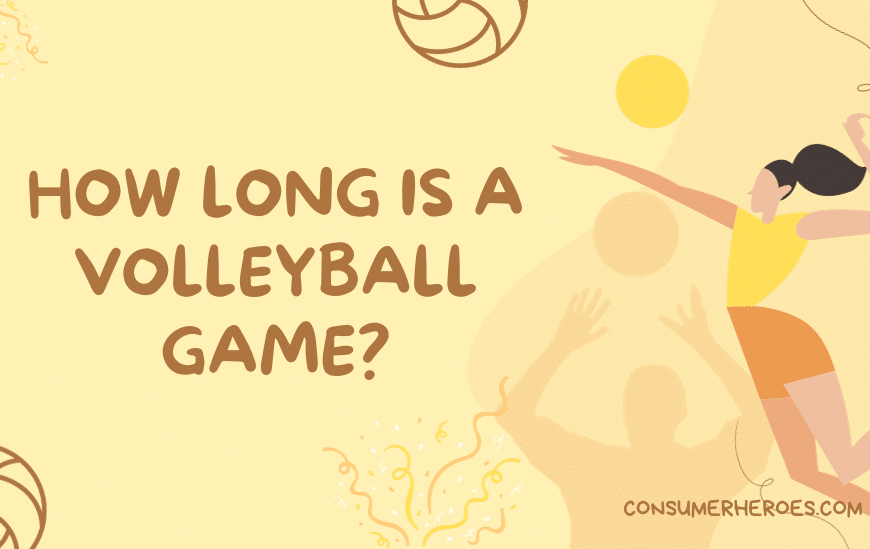Volleyball is a popular sport that is played worldwide. It is a game that requires quick reflexes, coordination, and teamwork. Like any other sport, volleyball has its own set of rules and terminologies that players and enthusiasts need to understand. One of the most important terminologies in volleyball is “side out.”
In volleyball, a side out refers to a change of possession that occurs when the serving team fails to score a point or commits a fault. When the serving team fails to score a point, the receiving team gains the right to serve, and the serving team must rotate one position clockwise. This rotation ensures that each player gets an equal opportunity to serve.
Side out is an essential aspect of volleyball, and it is crucial to understand the concept to play the game effectively. A team’s ability to side out successfully can determine the outcome of a match. In the following sections, we will discuss the different scenarios where side out occurs in volleyball and how it affects the game.
Definition of Side Out in Volleyball
In volleyball, a side out occurs when the team that served the ball fails to score a point or commits a violation, resulting in the ball being given to the opposing team to serve. The term “side out” is used to describe the situation where the serving team loses their serve and the receiving team gains the right to serve.
A side out can occur in a number of ways, such as when the ball goes out of bounds, is hit into the net, or is blocked by the opposing team. Additionally, if the serving team commits a violation, such as a foot fault or touching the net, a side out is awarded to the receiving team.
In order to win a volleyball game, a team must score a certain number of points, typically 25 or 21, and have a lead of at least two points. The team that reaches the required number of points and has a two-point lead is declared the winner. A side out can be a critical moment in a game, as it often determines which team has the opportunity to score points and gain momentum.
Overall, understanding the concept of a side out is essential for players and fans of volleyball, as it is a fundamental part of the game. By knowing when a side out occurs and what it means for each team, players can strategize and make informed decisions to improve their chances of winning.
Historical Context of Side Out
Side out is a term that has been used in volleyball for several decades. It refers to the rule that was in place until the 1990s, which required a team to be serving to score a point. If the team that was receiving the serve won the rally, they would earn the right to serve, and the other team would lose their serve.
This rule was in place for many years and had a significant impact on the way that volleyball was played. Teams would often play more conservatively, as they did not want to risk losing their serve and giving the other team an advantage.
In the 1990s, however, the rules of volleyball changed, and the side-out rule was eliminated. This change allowed teams to score a point regardless of whether they were serving or receiving. It also led to a more aggressive style of play, as teams were no longer as concerned about losing their serve.
Today, the side-out rule is no longer in place, but it remains an important part of volleyball history. It is a reminder of how the game has evolved over the years and how rule changes can have a significant impact on the way that the game is played.
Implications of Side Out in Scoring
In volleyball, a team earns a point when it wins a rally, which is a sequence of plays that begin with a serve and end with a point scored by one of the teams. The team that wins a rally earns the right to serve, and the team that loses the rally loses the right to serve, which is known as a side out.
The significance of a side out in scoring is that the team that loses a rally not only loses the point but also loses the opportunity to score a point until it regains the right to serve by winning a rally. This means that a team can only score points when it is serving, and it must win rallies to keep serving and score more points.
The implications of side out in scoring are particularly important in the game of beach volleyball, where the scoring system is different from indoor volleyball. In beach volleyball, a team needs to score 21 points to win a set, and the game is played in a best-of-three or best-of-five sets format. The team that wins a rally scores a point and retains the right to serve, and the first team to reach 21 points with a two-point lead wins the set.
In beach volleyball, a side out can have a significant impact on the outcome of a set or a match, as it can give the opposing team the opportunity to score points and build a lead. Therefore, a team that is able to side out consistently and win rallies when it is serving has a better chance of winning the set or the match.
In conclusion, the implications of side out in scoring are critical in volleyball, as they determine which team has the opportunity to score points and build a lead. A team that is able to side out consistently and win rallies when it is serving has a better chance of winning the match.
Side Out Strategy
In volleyball, the term “side out” refers to a team earning the right to serve by winning a rally when the opposing team was serving. Side out strategy, therefore, is the plan a team develops to efficiently win rallies when they are receiving serve and regain the right to serve.
One important aspect of side out strategy is communication. Players must communicate effectively to ensure they are in the correct position to receive serve and make the first pass. The first pass, also known as the “serve receive,” is crucial to a team’s success in side out strategy. A good serve receive pass can lead to a well-executed attack and ultimately a point for the team.
Another aspect of side out strategy is the use of different offensive plays. Teams may use a variety of plays, such as quick sets, back sets, or combination plays, to catch the opposing team off guard and score a point. It is important for players to be aware of their teammates’ strengths and weaknesses and adjust their plays accordingly.
In addition to communication and offensive plays, a team’s defense also plays a crucial role in side out strategy. A strong defense can prevent the opposing team from scoring and give the receiving team a better chance to side out. Players must be quick and agile to cover the court and make successful digs.
Overall, side out strategy requires a combination of communication, offensive plays, and defense. By developing a solid side out strategy, a team can increase their chances of winning matches and ultimately achieving their goals.
Effects on Player Rotation
In volleyball, the side-out rule affects player rotation. When a team wins a rally, they earn a point and the right to serve. The serving team rotates one position clockwise, and the players move to their next position on the court. The player in the right-back position moves to serve, and the player who served moves to the right-front position.
If the serving team loses a rally, they lose the serve and rotate one position clockwise. The player in the right-back position moves to the right-front position, and the player who was in the right-front position moves to the middle-front position. The player in the middle-front position moves to the left-front position, and so on.
The side-out rule affects player rotation because it determines which team serves and which team receives the serve. The team that serves has an advantage because they can control the pace and direction of the ball. The team that receives the serve must react quickly to the serve and try to set up an attack.
In addition, the side-out rule affects the strategy of the game. The serving team can use different types of serves to try to score points, such as a jump serve or a float serve. The receiving team can try to pass the serve accurately to set up an attack, or they can try to disrupt the serve by making the server move or by using a defensive strategy.
Overall, the side-out rule is an important part of volleyball that affects player rotation and strategy. By understanding the rule and its effects, players can develop effective strategies for serving, receiving, and attacking.
Common Misconceptions About Side Out
There are a few common misconceptions about the term “side out” in volleyball. Here are some of the most prevalent ones:
Misconception #1: Side Out Means Winning a Point
Many people believe that when a team side outs, they win a point. However, this is not the case. When a team side outs, they simply regain the serve. They do not receive a point for doing so.
Misconception #2: Side Out Only Happens on the First Serve
Another common misconception is that side out only happens on the first serve of the game. In reality, side out can occur at any point during the game. If the receiving team wins a rally, they side out and gain the serve. If the serving team wins a rally, they continue to serve.
Misconception #3: Side Out Only Happens in Indoor Volleyball
While side out is a term more commonly used in indoor volleyball, it also applies to beach volleyball. In beach volleyball, side out occurs when the receiving team wins a rally and gains the serve.
It’s important to understand the true meaning of side out in order to have a clear understanding of the game of volleyball.
Conclusion
In conclusion, side out is a crucial aspect of volleyball and can have a significant impact on the outcome of the game. It is a term that refers to the right of a team to serve, which is earned by winning a rally.
During a match, the team that wins a rally earns the right to serve, and the opposing team must side out to regain the right to serve. If a team fails to side out, they will continue to lose points until they do so.
To side out successfully, a team must execute a well-planned offensive play that can deceive the opposing team’s defense. This can be achieved through a variety of strategies, including quick sets, fakes, and misdirections.
It is also important to note that side out is not the only way to score points in volleyball. Teams can also earn points through blocking, attacking, and serving. However, the ability to side out effectively can give a team a significant advantage in the game.
Overall, understanding the concept of side out is essential for anyone who wants to participate in or watch volleyball. It is a fundamental aspect of the game that can have a significant impact on the outcome of a match.







